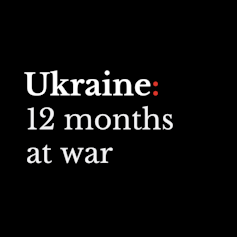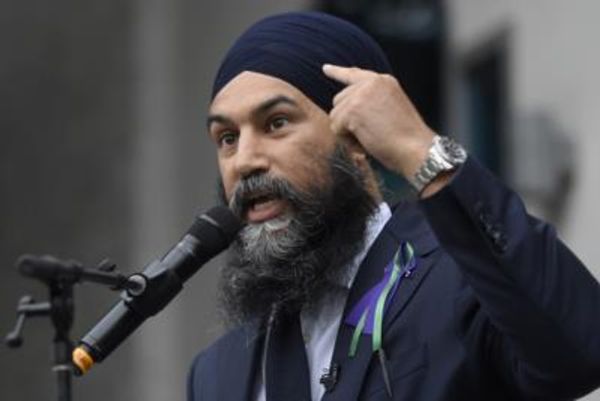The recent bout of shuttle diplomacy around the capitals of Europe by Ukraine’s president, Volodymyr Zelensky, appears to be yielding results.
Zelensky’s appearances in the UK, France and Brussels had two main aims. The first has been constant since the war begin a year ago: to maintain western focus on his message that Ukraine will not accept Russian occupation of his country’s sovereign territory. His second is currently even more important: to continue his pressure on European nations to continue to provide arms.
That his message on Ukrainian sovereignty was getting through was evident. The same day that Zelensky addressed a joint sitting of the UK parliament, Prime Minister Rishi Sunak told the Commons that Britain remained committed to ensuring Russia’s defeat in Ukraine. And days later, Sunak told a Munich Security Conference on February 18: “Now is the moment to double down on our military support.”
One specific issue that emerged from Zelensky’s visit was Ukraine’s need for sophisticated fighter jets. There is understandable reluctance among western governments to provide the latest fighter aircraft, which many leaders see as risking escalation into direct conflict between Nato and Russia. But there is also considerable sympathy for Zelensky’s demands, which could transform the conflict on the ground.
So it’s worth looking in a little detail at how air power has transformed warfare over the past century to get an understanding on how they might affect the conflict in Ukraine.

Since Vladimir Putin sent his war machine into Ukraine on February 24 2022, The Conversation has called upon some of the leading experts in international security, geopolitics and military tactics to help our readers understand the big issues.
Air power has been used in a variety of ways since the first air raids were carried out by Italian pilots who threw bombs from the cockpits of their biplanes at Ottoman troops during a campaign in Libya in 1911. In more than a century since, air power has redefined how wars are fought, from its reconnaissance capabilities to transporting troops and equipment and mounting aerial attacks on enemy targets at and behind the front lines.
But to gain and maintain aerial power, modern fighter and multi-role aircraft are vital. Apart from anything else, air superiority denies the same capabilities to the enemy.
The first century
It was arguably the British, in the development of their thinking surrounding the application of air power prior to 1914, who understood how important it would be to dominate the skies above the battlefield and deny the enemy the ability to use aircraft for observation purposes.
This was put to the test on the western front of the first world war, where all sides used air power in a variety of ways to increase the effectiveness of their ground forces.
Aerial observation proved decisive in the opening phase of the conflict. For example, French air reconnaissance spotted a mistake in the German advance on Paris in September 1914 and allowed the allies to counterattack at the River Marne.
This of course was followed by years of trench warfare, where air reconnaissance allowed both sides to spot any changes in defensive structures or troop buildups. Reconnaissance also enhanced the deadly capabilities of both sides’ artillery.
With guns placed far behind the front lines, it was difficult for the battery commanders to judge the location and range of their targets. Aircraft spotters were able to pass this information back to commanders who could adjust their aim.
In the second world war, aircraft became adept at supporting forces on the ground prior to and during attacks. The British developed a system that allowed close air support to be conducted when required, rather than being planned.
This meant that forces on the ground could request support when required, allowing greater flexibility in planning and conducting operations. Attacks could also be conducted behind enemy lines with the intent of sealing off the battlefield and preventing reserves and supplies from entering the battle.
Aircraft were also used to attack targets of strategic importance in the enemy homeland, as we know from the blitz in London and other major UK cities. Britain and the US also conducted major bombing raids against German factories and oil supplies and on centres of population to target German morale as well as industry.
Ukrainian skies
At present it appears unlikely that any aircraft given to the Ukrainian military by its allies will be used to attack targets in Russia, due to the danger of escalation. But they can be effective in a number of other ways.
Ukraine presently has 175 fighter jets. Boosting that number significantly will make it easier for Ukraine’s air force to conduct more reconnaissance missions. This will be vital ahead of fresh offensives in the spring and summer when better weather brings greater mobility back to the battlefield.
Given the multi-role nature of the aircraft that are being requested, attacks in support of ground offensives through close air support and battlefield air interdiction can also be conducted with greater ease and regularity. This would make Ukrainian ground forces more effective in offensive operations and provide greater resistance in the face of Russian attacks.
It is unlikely that these aircraft will be seen in combat missions over Ukraine in the short term as the training required will take many weeks and potentially months or even years. While they will not guarantee victory, they will provide Ukrainian forces with greater capabilities with which to conduct operations on the ground.
Matthew Powell does not work for, consult, own shares in or receive funding from any company or organization that would benefit from this article, and has disclosed no relevant affiliations beyond their academic appointment.
This article was originally published on The Conversation. Read the original article.







